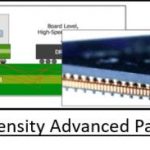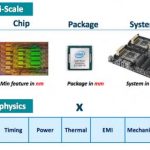At Semicon West last week I attended presentations by Soitec and CEA Leti, and had breakfast with CEA Leti CEO Marie Semeria, key members of the Fully Depleted Silicon On Insulator (FDSOI) ecosystem. I have also seen some comments in the SemiWiki forum lately that make me believe there is some confusion on the roles of different companies in the FDSOI ecosystem. In this article, I will review the key players and their roles and then discuss the latest updates.
FDSOI Ecosystem
Figure 1 illustrates the roles of the major players in the FDSOI ecosystem.
Figure 1. The FDSOI ecosystem.
Regardless of whether a process is bulk, FDSOI or FinFET all of the major companies running wafer fabs buy the starting substrates. For FDSOI, an SOI wafer is needed with a thin silicon devices layer over a thin buried oxide layer. The leading provider of FDSOI wafers is Soitec with SEH as a licensed second source.
The fab operators for FDSOI are ST Micro as an Integrated Device Manufacturer (IDM) and Samsung and GLOBALFOUNDRIES as foundries. CEA Leti is the leading development organization working on FDSOI technology.
FDSOI products are starting to reach the market, Sony has produced an FDSOI GPS chip that reduces power by 5x to 10x versus standard GPS chips and NXP is producing 28nm FDSOI parts at Samsung for Amazon’s Alexa.
Automotive is an emerging area due to FDSOI’s inherent radiation tolerance. IOT is also expected to be a big market for FDSOI due to good RF and analog performance coupled with low power, high performance and relative ease of design.
Soitec
Soitec has been manufacturing 300mm SOI wafers for many years. Originally 300mm was Partially Depleted SOI (PDSOI) used primarily by IBM. At one-time IBM produced the processors for all three major gaming consoles but that business is largely gone now. When I blogged about Soitec back in October of 2016 their 300mm manufacturing capacity was underutilized and the company was struggling financially.
My October 2016 Soitec blog is here.
During Semicon West, Soitec held a lunch briefing and they disclosed that the company is now profitable. 200mm SOI is utilized to make RFSOI that goes into the front-ends of cell phones and that has been a big success. 60% of Soitec’s revenue is from RFSOI with 20% from automotive and 20% emerging. RFSOI is beginning to migrate to 300mm and FDSOI on 300mm is ramping. Silicon Photonoics is another emerging application for 300mm SOI.
Soitec has 650 thousand wafers per year of 300mm capacity in France. 100 thousand wafers per year of the 300mm capacity is currently FDSOI with 400 thousand wafers per year planned. Soitec is also restarting their Singapore facility with plans to produce 800 thousand 300mm wafers per year.
ST Micro
ST Micro was an early proponent of FDSOI and developed 28nm and 14nm processes working with CEA Leti. ST MIcro has put 28nm into production and licensed it to Samsung. ST Micro has never put 14nm into manufacturing but did license it to GLOBALFOUNDRIES to serve as the front end of line (FEOL) technology for 22FDX.
Samsung
Samsung licensed 28nm several years ago but then delayed the introduction while they worked out the manufacturing process. 28FDS was introduced in 2016, RF is being added in 2017 and embedded MRAM (eMRAM) in 2018. NXP has been very vocal in support of 28FDS.
Samsung has now announced 18FDS for 2019 with RF and eMRAM in 2020.
I have recently blogged about Samsung’s foundry roadmap including FDSOI here.
GLOBALFOUNDRIES (GF)
GF is currently ramping up 22FDX. 22FDX utilizes a 14nm FEOL licensed from ST Micro with a middle of line (MOL) that has two double patterned layers. 22FDX supports RF and will add eMRAM in 2018. 22FDX is the densest FDSOI process currently available and GF is reportedly engaged with over 60 customers.
My blog about 22FDX is available here.
GF is developing 12FDX with CEA Leti for introduction in 2019.
CEA Leti
CEA Leti has been a driver of FDSOI development. They did early work with ST Micro that led to the ST Micro 28nm and 14nm processes, that technology is being further commercialized by GF and Samsung. CEA Leti is now working with GF on GF’s 12FDX development and according to CEO Marie Semeria has 15 researchers stationed at GF’s fab in Dresden.
CEA Leti has modeled a 10nm FDSOI process and run test devices that match the modeled results. CEA Leti has also modeled 7nm and because 10nm did not need all of the performance boosters that are available Marie Semeria said she is confident 7nm is possible.
My previous interview with Marie Semeria is available here.
Conclusion
FDSOI has now built up a strong ecosystem. Starting wafers are available from Soitec and SEH, ST Micro is in production with 28nm as an IDM, Samsung offers 28FDS as a foundry with 18FDS in development, and GF offers 22FDX as a foundry with 12FDX in development. CEA Leti provides a world class research institute continuing to develop denser version of the technology with 7nm as a future option.






